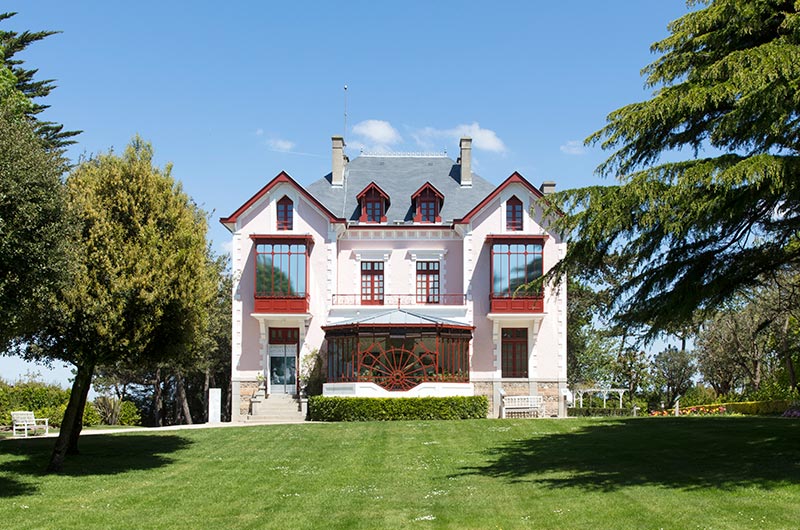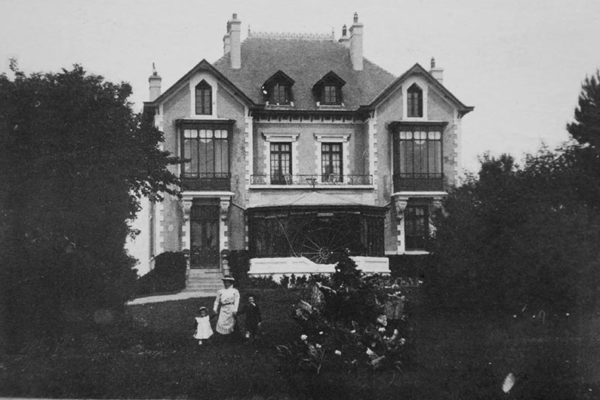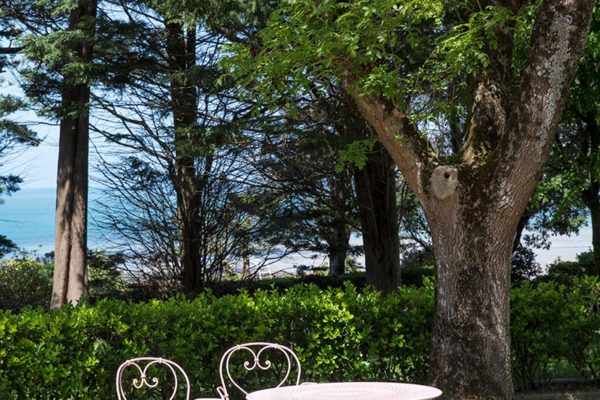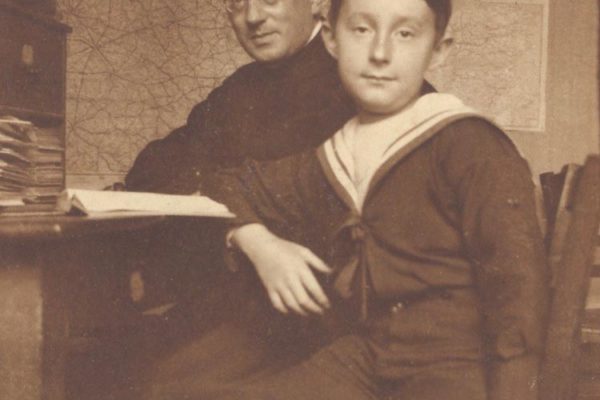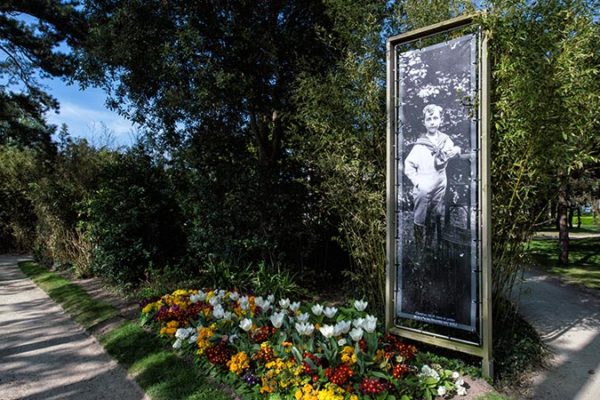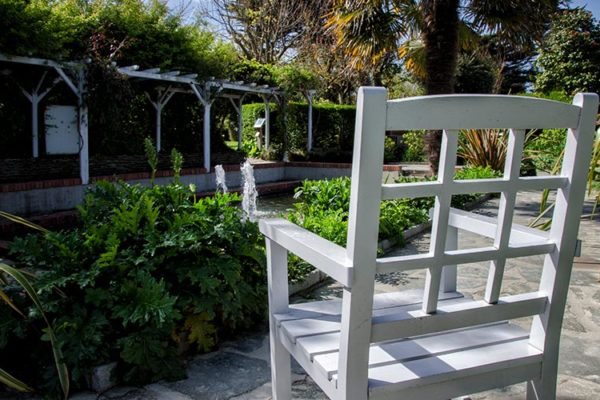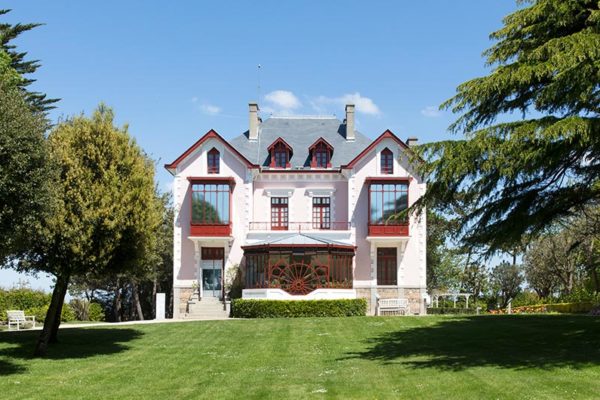Visiting Les Rhumbs, the childhood home of Christian Dior
The couturier grew up in this windy Norman house surrounded by a cleverly designed garden. It is in Granville that one must come to find the roots of his style. – Isabelle Cerboneschi
There are places that have the power to shape a person. The Rhumbs, for example. If Christian Dior became the fashion designer he was, it was also thanks to this house in Granville. Thanks to its pink walls, to those grey cliffs covered with silver ivy and colourless vegetation, to the garden that surrounded it right on the Channel. It is partly because of the wind, which is determined to destroy what you are trying to build, a rose garden for example, in such an unfavourable environment. When things resist, you tend to want to bend them. And that’s what Madeleine, Christian Dior’s mother, did: against all odds, she would have her garden and she would grow roses, and they would smell, and everything would be fine.
Like all Anglo-Norman houses at the end of the last century, the house of my childhood was dreadful. But I still have the fondest and most wonderful memories of it.
Les Rhumbs has a perfume of mystery that begins with the hazelnut and boxwood maze at the entrance to the garden, in the little rock garden where the Dior children used to undress to go down to the sea for a swim. It has a taste of solitude too, entrenched, well sheltered, behind its garden.
This bourgeois house, built by a shipowner, a certain Monsieur Beust, at the end of the 19th century, was acquired by Maurice Dior in 1905, the year his son Christian was born. A building without any particular charm. “Like all Anglo-Norman houses at the end of the last century, the house of my childhood was dreadful. But I still have the fondest and most wonderful memories of it. What shall I say? My life and my style owe almost everything to its location and architecture,” wrote the couturier in his autobiography “Christian Dior & I”.
Maurice Dior owned fertilizer and chemical factories. They had been founded in 1832 by his forefathers, who had a nose for investing in Chilean guano, so to speak. The Dior factory was Saint Mark’s lye, bleach, and bird droppings, the antipodes of the world of elegance and perfume that Christian Dior would build.
Les Rhumbs owes its name to this marine term that designates the 32 facets of the compass rose, a symbol that would accompany the designer’s life. Just like the roses, moreover, his mother, Madeleine, never ceased to plant them in the restive soil.

In summer, Granville is a seaside resort that attracts tourists and Parisians on holiday. When you stand at the edge of the cliff, you can see the Plat-Gousset promenade below. It was so named because when the men came out of the casino, they left with a flat gusset. As Christian Dior grew, so did the coast.
Having inherited my mother’s passion for flowers, I especially enjoyed the company of plants and gardeners
During the three summer months, the young boy attended children’s costume balls, invented costumes, and lived with the Parisian arrivals. “During the other nine months, isolated on our property as if on an island […] we saw hardly anyone. This isolation suited my tastes. Having inherited my mother’s passion for flowers, I especially enjoyed the company of plants and gardeners,” writes Christian Dior.
It is not uncommon to experience the four seasons at once in Granville: sun, clouds, rain, hail, and sun again, because it is May. Before the arrival of Madeleine Dior, the master gardener here was the wind. In order to protect her plantations and to succeed in growing plants that it would have been unthinkable to grow here – roses, geraniums, jasmine – Madame Dior had erected various ramparts of vegetation that protected her treasures against the elements.
This garden helps to understand the skilful construction of Christian Dior’s dresses, with their multiple layers, which can be discovered in the exhibition Les trésors de la Collection, 30 ans d’acquisitions, which is being held at the villa Les Rhumbs until 6 January 2019. They cannot be attributed solely to the fact that he dreamed of becoming an architect and that this ambition was thwarted. The idea of building in the gardens of Granville is fundamental. It must be kept in mind if we are to understand how Dior constructed his style and his fabric architectures.
During the 1929 crisis, Maurice Dior, like many others, suffered a setback and was forced to sell the Rhumbs in 1932. The town of Granville acquired it in 1938. It had planned to raze the house and turn it into a public garden, but the war took away the means to do so. This is how the villa was saved and became the Dior Museum.
The house of my childhood was plastered in a very soft pink, mixed with grey gravel, and these two colours have remained my favourite shades in couture
“The house of my childhood was plastered in a very soft pink, mixed with grey gravel, and these two colours have remained my favourite shades in couture,” wrote Christian Dior. The pink tone of the plaster is much stronger today, but there is still the grey of the gravel and the cliffs. But is it the famous Dior grey? It’s hard to say: Dior grey varies according to the materials used. You can’t get the same result on paper, silk or paint. Christian Dior liked grey because mistakes were immediately visible: it is a sufficiently neutral and chic background to reveal either the beauty or the perfectible aspects of a creation.
All of this becomes clear when you visit the villa Les Rhumbs. Even if the garden has little to do with Madeleine Dior’s garden. Indeed, when you look at the photos of the time, you discover a much denser greenery, wild and at the same time built, with massifs with Proustian charm that seem to have been left to the abandonment. There were seringas and wisterias, roses and honeysuckle.
The villa is camped there, on this wind-blown cliff. As you approach the small path that leads down to The Channel, you breathe in a particular smell, very fresh and aromatic. Perhaps it was the smell that Christian Dior used to breathe when he ran down to bathe in the sea…

